Hardware Correction of Parameters
|
| < Day Day Up > |
|
Most motherboards allow the correction of the voltage supplied to the CPU core (Vcore). When this capability is lacking, you can do it manually.
Usually, the processor automatically sets the required value of the supply voltage using the binary code set at specific contacts. These contacts typically are labeled as VID0, VID1, and so on (VID stands for Voltage Identification).
If it is necessary to change the value of the supply voltage and motherboard doesn't support this functional capability, the only recourse is to change the coding at these contacts.
In Slot 1 processors, which recently were quite popular, it is possible to change the supply voltage by closing the required contact (such as by gluing it). As a result, the value of 1 will be established on that contact.
| Voltage (V) | VID0 | VID1 | VID2 | VID3 | VID4 |
|---|---|---|---|---|---|
| 1.80 | 1 [*] | 0 | 1 | 0 | 0 |
| 1.85 | 0 [**] | 0 | 1 | 0 | 0 |
| 1.90 | 1 | 1 | 0 | 0 | 0 |
| 1.95 | 0 | 1 | 0 | 0 | 0 |
| 2.00 | 1 | 0 | 0 | 0 | 0 |
| 2.05 | 0 | 0 | 0 | 0 | 0 |
| 2.10 | 0 | 1 | 1 | 1 | 1 |
| 2.20 | 1 | 0 | 1 | 1 | 1 |
| 2.30 | 0 | 0 | 1 | 1 | 1 |
| 2.40 | 1 | 1 | 0 | 1 | 1 |
| 2.50 | 0 | 1 | 0 | 1 | 1 |
| 2.60 | 1 | 0 | 0 | 1 | 1 |
| 2.70 | 0 | 0 | 0 | 1 | 1 |
| 2.80 | 1 | 1 | 1 | 0 | 1 |
| 2.90 | 0 | 1 | 1 | 0 | 1 |
| 3.00 | 1 | 0 | 1 | 0 | 1 |
| 3.10 | 0 | 0 | 1 | 0 | 1 |
| 3.20 | 1 | 1 | 0 | 0 | 1 |
| 3.30 | 0 | 1 | 0 | 0 | 1 |
| 3.40 | 1 | 0 | 0 | 0 | 1 |
| 3.50 | 0 | 0 | 0 | 0 | 1 |
|
[*]1 means the contact is free
[**]0 means the contact is connected to the supply voltage | |||||
Motherboards automatically detect the required voltage levels by analyzing the code set by the VID0–VID4 contacts. As a result, the required supply voltage is set.
Note that using this method, it is only possible to change the value of 0 to 1; the reverse action is impossible. Therefore, this method is not applicable to the processors that have a supply voltage of 2.8 V. Such processors include Pentium II 233 MHz, 266 MHz, and 300 MHz.
However, this method can be used to correct the supply voltage of 2 V processors. Such processors include Pentium II 333 MHz, 350 MHz, 400 MHz, and 450 MHz and Celeron 266, 300, 300A, and 333.
| Input | VID0 | VID1 | VID2 | VID3 | VID4 |
| Contact | B120 | A120 | A119 | B119 | A121 |
The A1–A121 contacts are on the same side as the cooler or heatsink; the B1–B121 contacts reside on the opposite side. They are easy to find: Usually, it is sufficient to count from the contact whose number is labeled on the processor board.
Table 8.9 specifies which contacts can be glued (they are marked with an X) to obtain the required voltage.
| Voltage (V) | B119 | B120 | A119 | A120 | A121 |
|---|---|---|---|---|---|
| 2.0 | |||||
| 2.2 | X | X | X | ||
| 2.4 | X | X | X | ||
| 2.6 | X | X | |||
| 2.8 | X | X | X | ||
| 3.0 | X | X | |||
| 3.2 | X | X | |||
| 3.4 | X |
The required contacts can be glued with varnish or adhesive tape. If desired, you can also cut the contact. This task has can be accomplished in numerous ways. However, you must proceed carefully: By cutting the wrong contact, you can accidentally increase the voltage to such a level that the core would be destroyed immediately after you power on the computer.
When increasing the CPU supply voltage, remember that the power consumed by the processor will grow accordingly. Consequently, it will be necessary to provide additional cooling for the processor.
Like Pentium II, Pentium III for Socket 1 automatically specifies the required power supply voltage via the binary code set on the five output contacts. These contacts again are named VID0, VID1, VID2, VID3, and VID4 (VID stands for Voltage Identification).
| Voltage (V) | VID0 | VID1 | VID2 | VID3 | VID4 |
|---|---|---|---|---|---|
| 1.30 | 1 [*] | 1 | 1 | 1 | 0 |
| 1.35 | 0 [**] | 1 | 1 | 1 | 0 |
| 1.40 | 1 | 0 | 1 | 1 | 0 |
| 1.45 | 0 | 0 | 1 | 1 | 0 |
| 1.50 | 1 | 1 | 0 | 1 | 0 |
| 1.55 | 0 | 1 | 0 | 1 | 0 |
| 1.60 | 1 | 0 | 0 | 1 | 0 |
| 1.65 | 0 | 0 | 0 | 1 | 0 |
| 1.70 | 1 | 1 | 1 | 0 | 0 |
| 1.75 | 0 | 1 | 1 | 0 | 0 |
| 1.80 | 1 | 0 | 1 | 0 | 0 |
| 1.85 | 0 | 0 | 1 | 0 | 0 |
| 1.90 | 1 | 1 | 0 | 0 | 0 |
| 1.95 | 0 | 1 | 0 | 0 | 0 |
| 2.00 | 1 | 0 | 0 | 0 | 0 |
| 2.05 | 0 | 0 | 0 | 0 | 0 |
| 2.10 | 0 | 1 | 1 | 1 | 1 |
| 2.20 | 1 | 0 | 1 | 1 | 1 |
| 2.30 | 0 | 0 | 1 | 1 | 1 |
| 2.40 | 1 | 1 | 0 | 1 | 1 |
| 2.50 | 0 | 1 | 0 | 1 | 1 |
| 2.60 | 1 | 0 | 0 | 1 | 1 |
| 2.70 | 0 | 0 | 0 | 1 | 1 |
| 2.80 | 1 | 1 | 1 | 0 | 1 |
| 2.90 | 0 | 1 | 1 | 0 | 1 |
| 3.00 | 1 | 0 | 1 | 0 | 1 |
| 3.10 | 0 | 0 | 1 | 0 | 1 |
| 3.20 | 1 | 1 | 0 | 0 | 1 |
| 3.30 | 0 | 1 | 0 | 0 | 1 |
| 3.40 | 1 | 0 | 0 | 0 | 1 |
| 3.50 | 0 | 0 | 0 | 0 | 1 |
|
[*]1 means the contact is free
[**]0 means the contact is connected to the supply voltage | |||||
As with Pentium II, motherboards automatically detect the required voltage levels by analyzing the code at the VID0–VID4 output contacts.
Method and features of voltage correction coincide to those previously described. By insulating a contact, it is possible to change the value of the code specified. Insulating a contact sets its value to 1. The location table of the VID0–VID4 remains unchanged, because it is determined by the Slot 1 standard.
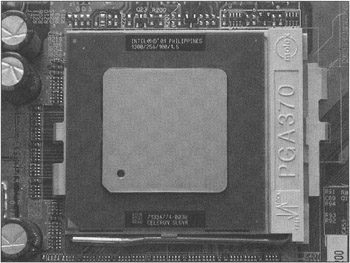
Figure 8.18: Celeron installed in Socket 370
Migration from the Slot 1 standard to the Socket 370 standard has caused significant changes in PC architecture. Different versions of Pentium III and Celeron have appeared, based on different cores and technologies and created for different form factors. The most popular version was Celeron based on the Tualatin core and using the 0.13-micrometer technology.
However, these architectural changes didn't eliminate the necessity of manually correcting the required parameters.
Like previous models created for Slot 1, processors corresponding to the Socket 370 standard allow you to change the core supply voltage. For these elements, motherboards also detect the required voltage levels automatically by analyzing the code specified by the appropriate contact. As a result of this analysis, the motherboard establishes the required level of core voltage.
To correct the core voltage, it is necessary to change the state of the contacts that determine the level of supply voltage. This can be done by insulating the respective contacts. Insulating a contact ensures its transition to the 1 state. Besides this, connecting the contact to the ground ensures its transition to the 0 state. Choosing the states of VID0, VID1, VID2, and so on, specifies the binary code according to which the required level of supply voltage is established.
To correct the voltage, take the following steps:
-
Visit http://www.intel.com and download the document that contains description of your processor.
-
This document usually contains a table that summarizes the states (codes) of the VID contact group, along with their corresponding voltage levels supplied to the CPU core. State 1 means the contact is free, and state 0 means it has the supply voltage (Vss, also referred to as ground) potential.
-
To find the required pins, consult the map of contacts, usually at the end of the document. Contacts responsible for the core voltage are usually located in the top-right corner of the chart.
-
Using the information collected in Step 3 and the "key" (processor skew), identify the physical contacts on the processor.
-
To set a chosen contact from the VID group to state 1, insulate the contact. You can use insulation from a thin wire (such as Teflon insulation from an electric wire). You also can use special insulating varnish, even cut the pin from the processor, or drill a hole for this contact in the Socket 370 slot. The latter approach is not recommended; if you choose it, you'll be unable to return to the previous variants or keep the warranty.
-
To set a chosen contact from the VID group to state 0, connect this contact, using a thin wire, to the nearest Vss contact.
-
After a careful check, install the processor into the Socket 370 slot, install the cooler, and power on your computer.
-
When manipulating the processor, remember to avoid static electricity. When performing the operations, periodically discharge the static charge. An even better approach would be to use a special antistatic bracelet. Instead of the bracelet, you could wrap your wrist in wire without insulation and ground it via the 1 megohm (Mohm) resistor.
This can be illustrated using Celeron (Tualatin). The correspondence of core voltage levels and VID contact states are in Table 8.11.
| VID25mV | VID3 | VID2 | VID1 | VID0 | Voltage (V) |
|---|---|---|---|---|---|
| 0 [**] | 1 | 1 | 1 | 1 | 1.300 |
| 1 [*] | 1 | 1 | 1 | 1 | 1.325 |
| 0 | 1 | 1 | 1 | 0 | 1.350 |
| 1 | 1 | 1 | 1 | 0 | 1.375 |
| 0 | 1 | 1 | 0 | 1 | 1.400 |
| 1 | 1 | 1 | 0 | 1 | 1.425 |
| 0 | 1 | 1 | 0 | 0 | 1.450 |
| 1 | 1 | 1 | 0 | 0 | 1.475 |
| 0 | 1 | 0 | 1 | 1 | 1.500 |
| 1 | 1 | 0 | 1 | 1 | 1.525 |
| 0 | 1 | 0 | 1 | 0 | 1.550 |
| 1 | 1 | 0 | 1 | 0 | 1.575 |
| 0 | 1 | 0 | 0 | 1 | 1.600 |
| 1 | 1 | 0 | 0 | 1 | 1.625 |
| 0 | 1 | 0 | 0 | 0 | 1.650 |
| 1 | 1 | 0 | 0 | 0 | 1.675 |
| 0 | 0 | 1 | 1 | 1 | 1.700 |
| 1 | 0 | 1 | 1 | 1 | 1.725 |
| 0 | 0 | 1 | 1 | 0 | 1.750 |
| 1 | 0 | 1 | 1 | 0 | 1.775 |
| 0 | 0 | 1 | 0 | 1 | 1.800 |
| 1 | 0 | 1 | 0 | 1 | 1.825 |
|
[**]0 means the contact is connected to the supply voltage
[*]1 means the contact is free | |||||
Fig. 8.19 shows a fragment of the contact map of this Celeron processor, manufactured using 0.13-micrometer technology. The fragment shows the labels only for those contacts related to the manual correction of the processor parameters.
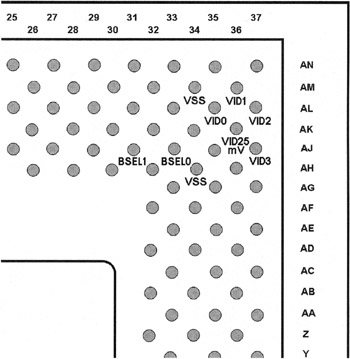
Figure 8.19: Fragment of the contact map of Celeron (Tualatin)

Figure 8.20: Celeron (Tualatin) (view of the contacts side)

Figure 8.21: Fragment of Celeron (Tualatin), with the VID and Vss contacts marked
Besides voltage correction, which is performed by changing the state of the contacts responsible for selection of the core supply voltage, you can choose another clock frequency of the processor bus. Celeron processors corresponding to the Socket 370 standard have inherited many features from Intel's Pentium III products: the case, the core architecture, and even the size and operating principles of L2 cache. However, Celeron processors always have a lower FSB frequency than their predecessors. Starting with Celeron (Coppermine), processors of this class were intended to run at the bus frequency of 100 MHz. Despite a more advanced technological process, new core, and the capability of operating at high frequencies, the newer models remained at the same bus frequency. Most Celeron (Tualatin) users increase the bus frequency (and, consequently, the core frequency) using the built-in functionality of a motherboard. When a motherboard doesn't support such functions, it is still possible to accomplish these operations by manipulating the appropriate contacts of the processor.
The processor has two contacts responsible for choosing bus frequency. Their possible states and the corresponding values of the FSB frequency are outlined in Table 8.12.
| BSEL1 | BSEL0 | Bus frequency (MHz) | Processor |
|---|---|---|---|
| 0 [**] | 1 | 100 | Celeron |
| 1 [*] | 1 | 133 | Pentium III |
|
[**]0 means the contact is connected to the supply voltage
[*]1 means the contact is free | |||
As follows from Table 8.12, to choose an FSB frequency of 133 MHz for a Celeron processor, it is sufficient to insulate the BSEL1 contact. The CPU clock frequency will grow accordingly.
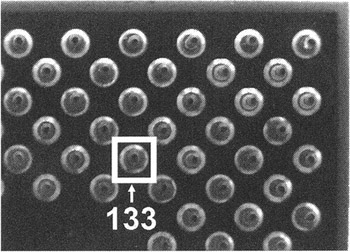
Figure 8.22: Fragment of Celeron, with the contact marked that allows you to set the FSB frequency to 133 MHz
The advantage of this method is the possibility of changing the FSB frequency even when the motherboard architecture doesn't provide the tools for supporting overclocked modes. The key drawback of this approach is its installation of intermediate values. Besides this, not all Celeron (Tualatin) processors can operate at this frequency. However, experience has shown that a high percentage of models intended to run at a clock speed of 900 MHz, 1 GHz, 1.10 GHz, or 1.2 GHz show stable operation at an FSB frequency set to 133 MHz. As a rule, the first three of these models don't even require you to raise the CPU core voltage. When you can't ensure stable operation of the computer at the FSB frequency of 133 MHz, the only recourse is to increase the core supply voltage. If the motherboard doesn't support the required functionalities, you can try the previously described method for choosing the supply voltage.
Figs. 8.23 and 8.24 give examples of increasing the FSB frequency and CPU core voltage for Celeron (Tualatin). The nominal mode is outlined in Table 8.13.

Figure 8.23: Implementation of the FSB frequency of 133 MHz and core voltage of 1.7 V

Figure 8.24: Implementation of the FSB frequency of 133 MHz and core voltage of 1.75 V
| VID25mV | VID3 | VID2 | VID1 | VID0 | CPU core voltage (V) | FSB frequency (MHz) |
|---|---|---|---|---|---|---|
| 0 [**] | 1 [*] | 0 | 1 | 1 | 1.5 | 100 |
|
[**]0 means the contact is connected to the supply voltage
[*]1 means the contact is free | ||||||
When considering the management of supply voltage, it is necessary to emphasize some features of AMD processors.
For Athlon XP, the core supply voltage is determined by the configuration of the L11 group of bridges.
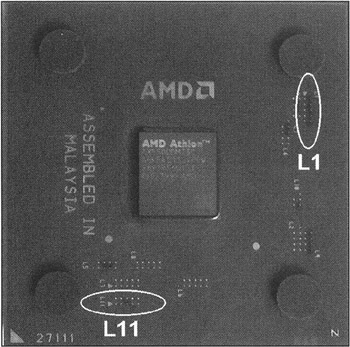
Figure 8.25: L1 and L11 bridges of Athlon XP (Palomino)
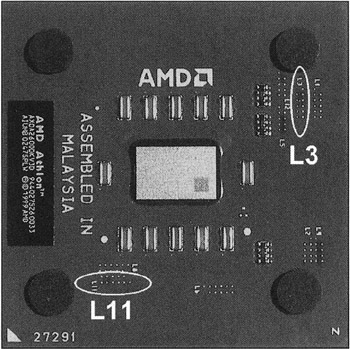
Figure 8.26: L3 and L11 bridges of Athlon XP (Palomino)
Possible configurations of the bridges from the L11 group, and their Vcore values, are provided in Table 8.14.
| 1 | 2 | 3 | 4 | 5 | Vcore voltage (V) |
|---|---|---|---|---|---|
| 1 [*] | 0[*] | 0 | 0 | 0 | 1.475 |
| 1 | 0 | 0 | 0 | 1 | 1.500 |
| 1 | 0 | 0 | 1 | 0 | 1.525 |
| 1 | 0 | 0 | 1 | 1 | 1.550 |
| 1 | 0 | 1 | 0 | 0 | 1.575 |
| 1 | 0 | 1 | 0 | 1 | 1.600 |
| 1 | 0 | 1 | 1 | 0 | 1.625 |
| 1 | 0 | 1 | 1 | 1 | 1.650 |
| 1 | 1 | 0 | 0 | 0 | 1.675 |
| 1 | 1 | 0 | 0 | 1 | 1.700 |
| 1 | 1 | 0 | 1 | 0 | 1.725 |
| 1 | 1 | 0 | 1 | 1 | 1.750 |
| 1 | 1 | 1 | 0 | 0 | 1.775 |
| 1 | 1 | 1 | 0 | 1 | 1.800 |
| 1 | 1 | 1 | 1 | 0 | 1.825 |
| 1 | 1 | 1 | 1 | 1 | 1.850 |
| ** 0 means the contact is connected to the supply voltage | |||||
|
[*]1 means the contact is free | |||||
|
| < Day Day Up > |
|
EAN: 2147483647
Pages: 111